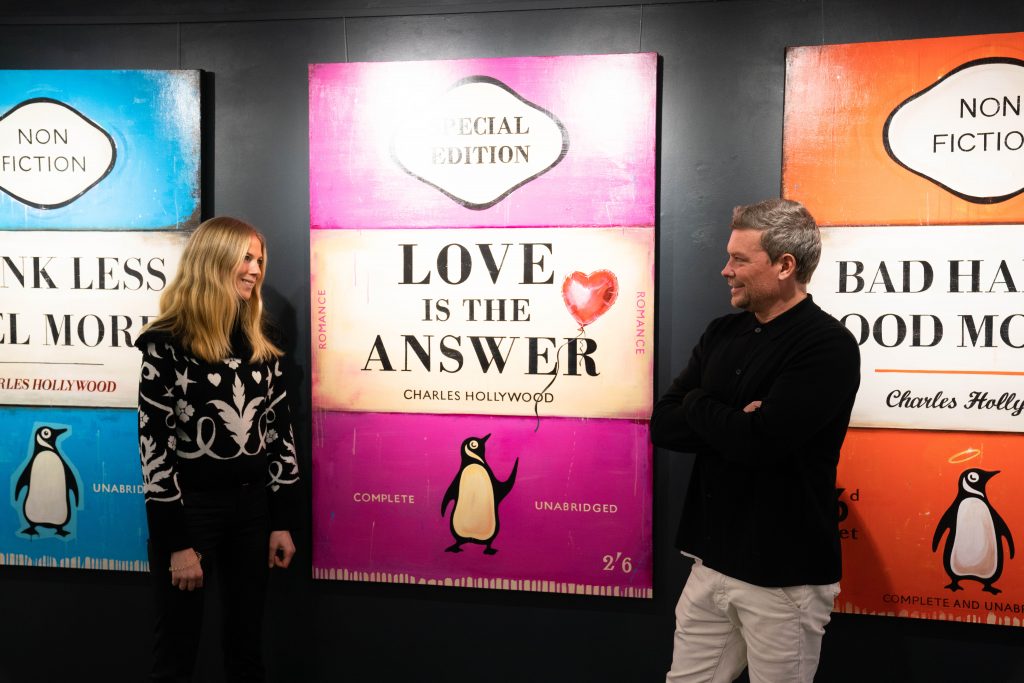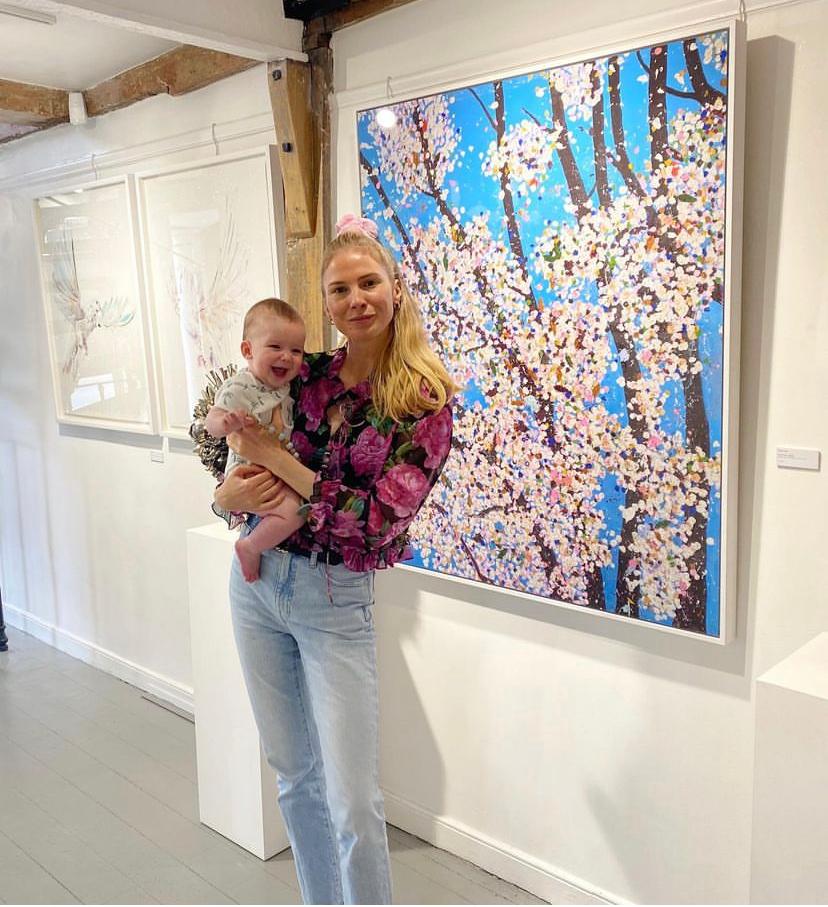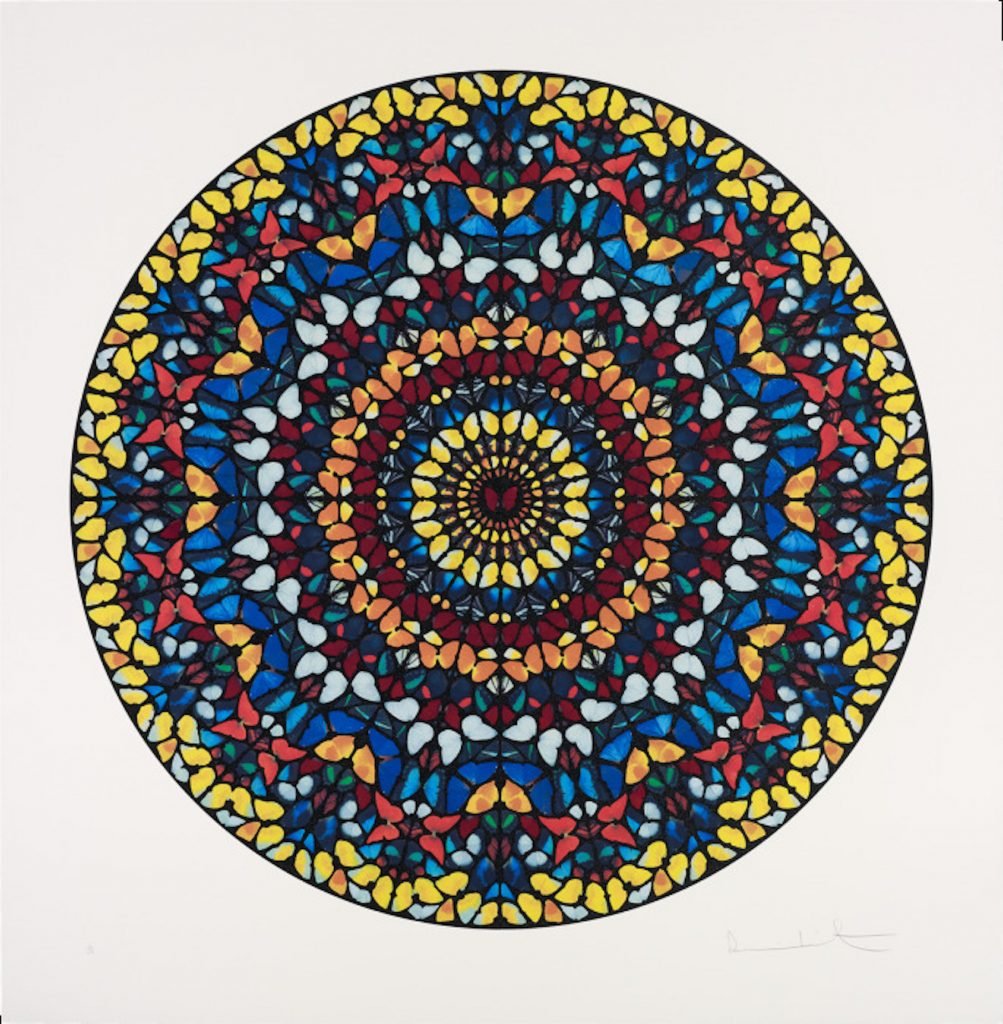Founded in 2010, the Drang gallery has become a bastion of contemporary art in the South West region of the UK. With four galleries – in Padstow, Rock, Salcombe and Burford – and run by Justin Easton and his wife Tess Young-Jamieson, the gallery has built its reputation largely on its collaborations and close relationships with leading artists, their studios and publishers. , allowing for a dynamic, cutting-edge exhibition program and roster of original and edited works. Of particular note is the gallery’s relationship with the studio and the work of Damien Hirtwith whom they have worked since the creation of the gallery.
We caught up with Easton to find out more about what first inspired him to found the Drang Gallery, his collection of works by Hirst, and the gallery’s ongoing program of exhibitions.

Justin Easton and Tess Young-Jamieson. Courtesy of Drang Gallery.
Can you tell us a bit more about the history and context of the Drang Gallery?
Having traveled extensively for much of my life and working in education for several years I decided to return to the UK provided I could live by the sea and have the lifestyle I wanted . Not knowing how to achieve this rather lofty goal at age 27, I consulted my parents who immediately discouraged me from teaching (having been a teacher for much of their life) as it seemed my mother had a lot of success with what was supposed to be his retirement project: an art gallery in the seaside town of Ilfracombe. As a family, we were raised surrounded by art and participated in exhibitions and the preparation of paintings.
I didn’t need much encouragement to move to Cornwall and open my first gallery in Newquay in 2004, which exhibited many local artists, seascapes and surf art. I remember contacting all the international artists who had established themselves through the surf culture, inviting them to exhibit with us in this relatively young but explosive surfing epicenter of Cornwall. Many have responded, and I’ve had the pleasure of working and building relationships with people like John Severson, Ozzy Wright, and Wolfgang Bloch.
Several openings, closings and moves later, the Drang Gallery Ltd. opened in 2010 on Padstow seafront and was followed by later spaces in Salcombe (South Devon), Rock (Cornwall) and Burford (the Cotswolds).
Tess and I met in 2016 while she was working in the art market in the Cotswolds, with great success! I had studied at Christie’s a few years earlier and she had just signed up for a six-month course at Sotheby’s, so everything was lining up for us it seemed. We fell in love and I knew instantly, with her drive, taste and attention to detail, that I wanted her to get involved in the Drang. With a bit of conviction on my part, she came on board and together we grew the business, opening the spaces in Rock and, more recently, Burford.

Tess Young-Jamieson with her son in front of Damien Hirst, Virtues – Justice (2021). Courtesy of Drang Gallery.
How do your approaches as gallery directors differ or align?
I have to be very careful about what I say here – working with your partner comes with some challenges, and it certainly isn’t easy, especially when you get a baby in trouble! Luckily for us, Tess brings a terrific eye to the business, handling a lot of the creative and marketing elements, while I take care of the logistics and business needs, so together we’re a pretty good crew. A crucial aspect on which we agree is what we perceive of the business and the direction in which we intend to go – the essential elements for growth and success.
With four gallery locations in the South West of England, does locality influence or inform the program of the Drang Gallery? How?
Certainly, in our early days, the gallery was strongly influenced by locality, well-known and represented subjects, our own passions and market demand. However, being derived from an existing gallery business in the South West, the one thing I wanted to achieve with Drang from the start was a very simple goal: to set Drang apart from the many art galleries in Cornwall and the Devon, not showcasing your typical seascape/harbour/landscape paintings, but rather bringing something new, fresh and exciting to this part of the UK
Working with established and emerging artists, publishers, studios and galleries in London and overseas, the Drang quickly established a reputation for trading material that had value, often a proven secondary market, and widespread recognition and appeal. We didn’t limit ourselves to what we thought the market wanted, but rather what we thought it needed.
Since opening, what are some of the biggest lessons you’ve learned?
Location, location, location. After opening and closing spaces in many places, we have learned the hard way that the road to success must not only be walked thoroughly, but by a very particular type of person. I firmly believe that much of the success we have had is due to taking risks; as my grandmother used to say, “you have to speculate to accumulate”, and certainly a lot of speculation has taken place over the past two decades. Taking risks, taking risks and believing in yourself has been paramount in the growth and development of the company.
Working in the art industry has been extremely rewarding, not only for its very nature, which is challenging, captivating and engaging, but also for the people you work with and the environment in which you work. We are both very grateful not only for what we do, but where we do it and why. We work with great artists and wonderful gear, from beautiful locations to grateful clients.

Damien Hirt, Pray (2013). Courtesy of Drang Gallery.
The gallery has an important collection of works by Damien Hirst. What initially attracted this attention?
My parents were based in Ilfracombe at the time Damien invested heavily in the area. They knew him and appreciated his contributions to the town: a restaurant, a shop, his plans to build a school and various other businesses which, in turn, brought a lot of confidence and support to the area. In 2010 when I approached Other Criteria with the concept of offering Damien’s editions to Padstow via the Drang, they thought it was a wonderful idea and fully supported us. We quickly became the largest OC account in the UK and have developed a reputation for our open, honest and welcoming gallery ethos and customer service.
I remember the first time I acquired a beautiful Psalm sprinkled with diamonds edition and proudly placed it in the gallery window with a price tag of £5,000. It was a defining moment, as many locals would say, “you’ll never sell anything but fish and chips and pastries here.” Of course the butterfly psalm didn’t sit out the window long and today the same piece is selling for over £30,000 at auction. It was certainly groundbreaking to sell top performers to a small fishing village in Cornwall and an even smaller sailing community in Salcombe, South Devon.
I can’t express how invaluable working with key artists and studios in those early years was to the growth and success of the company; I am eternally grateful for their support. Working with Other Criteria, Paul Stolper, CCA Galleries, Marc Quinn and Counter Editions studios has really helped us establish ourselves and gain recognition.

Damien Hirt,
All You Need Is Love, Love, Love (Diamond Dust) (2009). Courtesy of Drang Gallery.
Of all the works by Damien Hirst in the gallery’s collection, do you have a personal favourite? Or, alternatively, the one you consider most significant?
Having dealt with Damien’s editions since 2010, we’ve seen a lot come and go. Of course, there are some that I would have liked to keep! In particular, his large and beautiful paintings of butterfly mandalas have always mesmerized me, and the original printed versions no less; works such as Pray, Commitment, All you need is love, love, love. Larger than life, bright and beautiful, yet so simple and clean, in perfect balance and symmetry. I think the appeal of these subjects will be eternal, as they have since classical civilization.
Are there any upcoming exhibitions or news from the gallery that you can share with us?
We are currently preparing to exhibit at the Henley Festival in early July. We have been participating for a few years now and it is always a very good experience for all participants!
The next in-house exhibition on our calendar of events is a solo exhibition by Jack Davis original paintings. Although the Drang Gallery is not known for representing regional seascape artists, Davis is definitely the exception. His incredible skill in capturing our famous Cornish light, ever-changing almost abstract seas and skies, is truly exceptional. We have had great success with his collections, both in our South West galleries and in London where his work was a favorite on our stand at the London Art Fair. Davis’ exhibition ‘Trail Of Light’ will be on view in our Salcombe Gallery the last two weeks of July.
Learn more about the Drang Gallery here.
Follow Artnet News on Facebook:
Want to stay one step ahead of the art world? Subscribe to our newsletter to receive breaking news, revealing interviews and incisive reviews that move the conversation forward.
